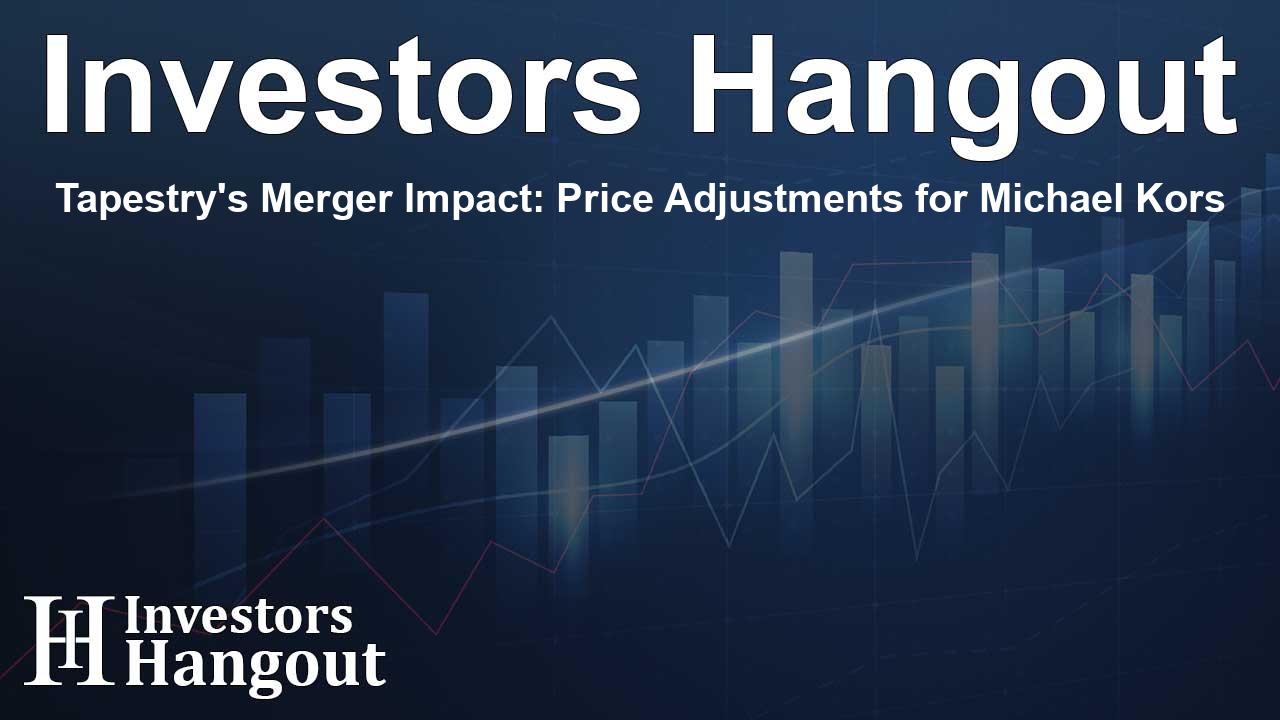Tapestry's Merger Impact: Price Adjustments for Michael Kors

Tapestry–Capri: What’s on the table
Tapestry, the fashion holding company behind Coach, Kate Spade, and Stuart Weitzman, is pursuing a major deal with Capri, owner of Michael Kors, Jimmy Choo, and Versace. The plan is a proposed $8.5 billion acquisition. It would bring six well-known luxury and premium brands under one roof, and it’s drawn close attention from regulators who are weighing what this could mean for competition and prices across the market.
Where prices could go
In recent court testimony, a senior Tapestry executive signaled that the combined company could raise prices on Michael Kors merchandise. One reason: Coach products currently sell at prices roughly $147 higher than comparable Michael Kors items. That gap is meaningful. It creates room, at least in theory, for Tapestry to move Michael Kors up without immediately clashing with Coach’s positioning.
What Tapestry’s research says
Elizabeth Harris, Tapestry’s senior vice president for global strategy and consumer insights, shared findings that support the possibility of higher average retail prices for Michael Kors handbags. She also drew a clear line: any increase wouldn’t be automatic. Decisions would have to account for brand identity, materials, and design details—factors that shape how shoppers judge quality and value. In short, the data may allow a move, but the brand story has to match it.
Discounting and brand positioning
Harris also focused on discounting. If the merger goes through, Tapestry could reduce the markdowns that Michael Kors currently relies on. Pulling back on discounts might lift margins and, over time, nudge consumer perception toward a higher-value, more consistent price narrative. That said, dialing down promotions is a balancing act: it can strengthen brand signal, but it also risks cooling demand if shoppers aren’t ready for the shift.
The fine print and trade-offs
Even with favorable internal analyses, Harris cautioned that pricing moves have to meet the market where it is. Competitors matter. So does what consumers want at a given price point. Those two forces—competitive pressure and desirability—will determine how far, and how fast, Tapestry can push any new strategy for Michael Kors without losing momentum.
Regulators are watching
The Federal Trade Commission (FTC) is scrutinizing how this deal could affect retail competition. Presentations in the trial have aired concerns that combining these brand groups might shrink competitive options and lead to higher prices for consumers. Tapestry’s legal team argues the opposite—that the merger will prove beneficial—and is working to counter those concerns with evidence presented to the court.
What’s next in court
The case is before District Judge Jennifer Rochon. Closing arguments are expected soon, and a decision could arrive within a few months. As that timeline unfolds, industry analysts are tracking how the consumer goods market might react—whether that’s to possible price increases, fewer discounts, or new brand strategies if the deal is approved.
Frequently Asked Questions
Which brands are part of the Tapestry–Capri deal?
The combined lineup would include Tapestry’s Coach, Kate Spade, and Stuart Weitzman, along with Capri’s Michael Kors, Jimmy Choo, and Versace.
Will Michael Kors prices go up if the merger happens?
They could. Testimony suggested room for higher average prices and fewer discounts on Michael Kors products, though any change would depend on brand positioning, materials, design, and how shoppers respond.
Why does the $147 price gap between Coach and Michael Kors matter?
Because Coach products sell about $147 higher on average, Tapestry sees strategic space to lift Michael Kors pricing without overlapping Coach. It’s an option, not a guarantee, and would be paced against consumer expectations.
What is the FTC focused on here?
The FTC is evaluating whether the merger could reduce competition and lead to higher prices. Those concerns have been raised in court, and Tapestry is pushing back with its own evidence and arguments.
When might the court rule on the case?
Closing arguments are expected soon. A ruling could follow within one to three months after the final statements, depending on the court’s timeline.
About The Author
Contact Olivia Taylor privately here. Or send an email with ATTN: Olivia Taylor as the subject to contact@investorshangout.com.
About Investors Hangout
Investors Hangout is a leading online stock forum for financial discussion and learning, offering a wide range of free tools and resources. It draws in traders of all levels, who exchange market knowledge, investigate trading tactics, and keep an eye on industry developments in real time. Featuring financial articles, stock message boards, quotes, charts, company profiles, and live news updates. Through cooperative learning and a wealth of informational resources, it helps users from novices creating their first portfolios to experts honing their techniques. Join Investors Hangout today: https://investorshangout.com/
The content of this article is based on factual, publicly available information and does not represent legal, financial, or investment advice. Investors Hangout does not offer financial advice, and the author is not a licensed financial advisor. Consult a qualified advisor before making any financial or investment decisions based on this article. This article should not be considered advice to purchase, sell, or hold any securities or other investments. If any of the material provided here is inaccurate, please contact us for corrections.
